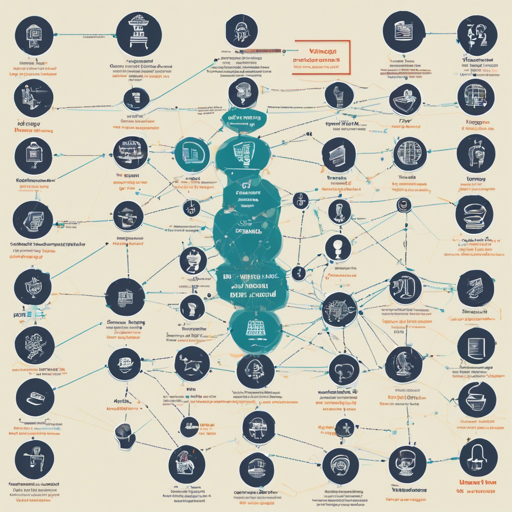In the realm of natural language processing (NLP), the BERT model has emerged as a powerhouse for tasks like part-of-speech (POS) tagging and dependency parsing. In this guide, we will explore how to utilize a specialized BERT model pretrained on Vietnamese texts, perfect for enhancing your applications that process the Vietnamese language.
Understanding the Model
This particular model is derived from vibert-base-cased. It has been specifically fine-tuned for tasks involving POS-tagging and dependency parsing. Think of this model as a guide for a ship navigating through Vietnamese text, helping to map out the relationships between words and their grammatical roles.
Getting Started
Before we can leverage this model, we must set it up correctly. Below is a simple implementation guide using Python:
class UDgoeswith(object):
def __init__(self, bert):
from transformers import AutoTokenizer, AutoModelForTokenClassification
self.tokenizer = AutoTokenizer.from_pretrained(bert)
self.model = AutoModelForTokenClassification.from_pretrained(bert)
def __call__(self, text):
import numpy, torch, ufal.chu_liu_edmonds
w = self.tokenizer(text, return_offsets_mapping=True)
v = w['input_ids']
x = [v[0:i] + [self.tokenizer.mask_token_id] + v[i + 1:] + [j] for i, j in enumerate(v[1:-1], 1)]
with torch.no_grad():
e = self.model(input_ids=torch.tensor(x)).logits.numpy()[:, 1:-2, :]
r = [1 if i == 0 else -1 if j.endswith('root') else 0 for i, j in sorted(self.model.config.id2label.items())]
e += numpy.where(numpy.add.outer(numpy.identity(e.shape[0]), r) == 0, 0, numpy.nan)
g = self.model.config.label2id['X_goeswith']
r = numpy.tri(e.shape[0])
for i in range(e.shape[0]):
for j in range(i + 2, e.shape[1]):
r[i, j] = r[i, j - 1] if numpy.nanargmax(e[i, j - 1]) == g else 1
e[:, :, g] += numpy.where(r == 0, 0, numpy.nan)
m = numpy.full((e.shape[0] + 1, e.shape[1] + 1), numpy.nan)
m[1:, 1:] = numpy.nanmax(e, axis=2).transpose()
p = numpy.zeros(m.shape)
p[1:, 1:] = numpy.nanargmax(e, axis=2).transpose()
for i in range(1, m.shape[0]):
m[i, 0], m[i, i], p[i, 0] = m[i, i], numpy.nan, p[i, i]
h = ufal.chu_liu_edmonds.chu_liu_edmonds(m)[0]
if [0 for i in h if i == 0] != [0]:
m[:, 0] += numpy.where(m[:, 0] == numpy.nanmax(m[[i for i, j in enumerate(h) if j == 0], 0]), 0, numpy.nan)
m[[i for i, j in enumerate(h) if j == 0]] += [0 if i == 0 or j == 0 else numpy.nan for i, j in enumerate(h)]
h = ufal.chu_liu_edmonds.chu_liu_edmonds(m)[0]
u = ""
v = [(s, e) for i, (s, e) in enumerate(w['offset_mapping'], 1) if e]
for i, (s, e) in enumerate(v, 1):
q = self.model.config.id2label[p[i, h[i]]].split()
u += ' '.join([str(i), text[s:e], "_", q[0], "_", ' '.join(q[1:-1]), str(h[i]), q[-1], "_", "_" if len(v) and e[i][0] else "SpaceAfter=No"]) + '\n'
return u + '\n'
nlp = UDgoeswith('KoichiYasuo/bert-base-vietnamese-ud-goeswith')
print(nlp("Hai cái đầu thì tốt hơn một."))The Analogy: A Master Chef’s Recipe
Using this model is much like following a master chef’s recipe to create a delicious dish. Each component of the code plays a role similar to ingredients and cooking techniques. First, you gather your primary ingredients (importing libraries and initializing the tokenizer and model), then prepare your base (tokenizing the text). Finally, the model applies a careful blend of calculations and orders (structured operations) to yield a final dish (output that includes POS tags and dependencies). Understanding this can help you appreciate the sophistication behind the simplicity of seeking results with BERT.
Troubleshooting
If you encounter any issues while implementing this model, consider the following troubleshooting ideas:
- Ensure that all necessary libraries (like transformers and ufal.chu-liu-edmonds) are properly installed in your environment.
- Double-check that you are using the correct model identifier for loading the model and tokenizer.
- Examine the format of the input text; undesired formatting may lead to unexpected results.
- Refer to documentation for specific methods in the libraries for further insights.
- For more insights, updates, or to collaborate on AI development projects, stay connected with fxis.ai.
Final Thoughts
By utilizing this BERT model initialized for Vietnamese texts, you can unlock powerful capabilities in text interpretation. From POS tagging to understanding dependencies, your applications will become significantly more sophisticated.
At fxis.ai, we believe that such advancements are crucial for the future of AI, as they enable more comprehensive and effective solutions. Our team is continually exploring new methodologies to push the envelope in artificial intelligence, ensuring that our clients benefit from the latest technological innovations.

